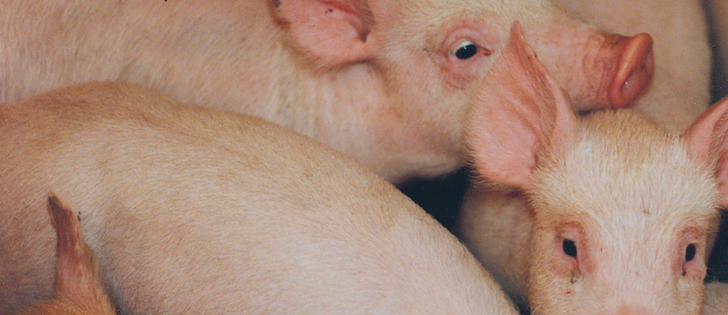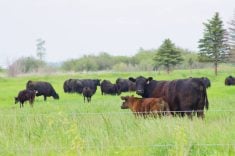While research is ongoing to find substitute treatments, producers grapple with keeping pigs healthy without antibiotics
QUEBEC CITY, Que. — Using little or no antibiotics in swine production may be the wave of the future, but finding alternative treatments is a challenge.
Consumer groups have been vocal about antibiotic-free food because they believe it tastes better, think it is healthier for them or worry about residue in the food or the environment.
They are also concerned about cross-species antibiotic resistance between humans and livestock, said Laura Greiner, director of nutrition at Carthage Innovative Swine Solutions in Illinois.
The organization carries out health, production and swine nutrition research.
Read Also

VIDEO: Ag in Motion documentary launches second season
The second season of the the Western Producer’s documentary series about Ag in Motion launched Oct. 8.
Antibiotics are used to prevent, manage and treat disease. They can also improve feed efficiency.
“There are times when antibiotics have to be used in a limited case-by-case basis,” Greiner said at the animal nutrition conference of Canada held in Quebec City May 10-11. The conference addressed antimicrobial resistance and potential alternative treatments.
In Canada, the antibiotic-free claim means the animal or fish must not have received antibiotics from birth to slaughter. The mother of the animal cannot receive antibiotics that might result in residues. Vitamins and minerals may be given only at the level of physiological action as a dietary supplement rather than an antimicrobial effect.
In the United States, the definition is more fluid and is often determined by processors.
“It is driven today by our packers and what companies prefer and what program we are going to follow,” she said.
Iowa State University estimated the cost of antibiotic-free swine production is about US$11-$15.50 per pig. Another study suggested there was minimal change in animal performance without the use of antibiotics, so the cost would be less than $1 per pig.
Greiner said no one is sure about the actual figures but producers must depend on packer premiums to cover potential added costs.
Research is ongoing to find substitute treatments, and since 1990 about 1,700 studies have been undertaken.
In addition, some alternative products lack scientific support to back up claims.
Keeping pigs healthy is a combination of good nutrition, sound biosecurity and management, as well as effective vaccines.
Supplementing feed rations with a range of products may improve gut health and boost the immune system.
Better health starts with newborns and recently weaned pigs because those are the most susceptible phases of growth.
“We need to focus on those first three weeks after weaning to transition the pig, not only for the gut but because the immune system is starting to transition away from maternal antibodies,” Greiner said.
Weaning pigs may need diets with more lactose, plasma and other beneficial supplements to give them a boost and get their guts working.
Supplements like ionophores, zinc, copper, phytase and acidifiers can help.
Prebiotics feed the good flora in the gut and probiotics are live cultures in the diet. To be of benefit to the young pig, they need to be stable and survive pelleting.
“The data that has come out of probiotic studies is highly variable,” she said.
Enzymes added to feed have been heavily researched but data is not consistent.
Adding enzymes like xylanase can help with feed efficiency while super dosing phytase helps reduce scours associated with plant products in the diet.
Essential oils like oregano and thyme are useful in swine diets because of their antioxidant and antimicrobial properties.
They can also increase feed intake and improve gut function.
However, Greiner said these products may work well for two weeks and then start to fail.
“You have to keep in mind when you go through these ABF (antibiotic-free) programs you are going to have to continually adjust because the organisms will adjust,” she said.
Alternate feed like rice and barley are good options for gut health, she said. Not all rice is the same so rations may have to be formulated differently.
Spray-dried plasma improves cell and immune function but producers may need to find alternatives if vegan diets are offered or if they are going antibiotic free.
“We need to do a better job if we are going to talk about antibiotic-free programs and alternatives to get a better understanding of these products. This is not going to be a one-size-fits-all program,” she said.


















